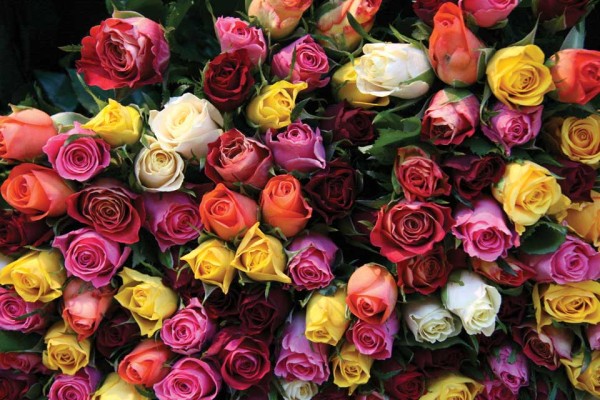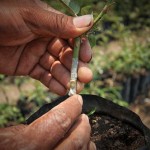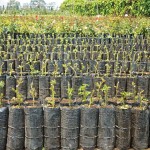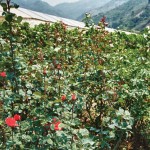Growing Roses in Guatemala
Guatemala is a major exporter of roses to the United States and Europe. The epicenter of rose production used to be La Antigua Guatemala, but rising real estate prices have pushed it far afield, especially since hothouse construction has never been so easy and inexpensive.
Step one is to dig a hole, leaving ample depth and sides. Digging a hole may seem obvious, but before the advent of the posthole digger it was not so easy. A Nobel for the inventor.
Step two is to remove that usually black plastic bag with the holes in it. This simple bag was a Guatemalan invention in the early 1950s that revolutionized the garden nursery business. Again, removing the bag may seem obvious, but in one infamous incident in a ritzy area of suburban Washington, D.C. stately trees over 50 years old began dying. All scientific attempts to save them failed until the equivalent of plant forensic scientists dug a few up only to find that the burlap bags in which they were originally delivered had never been removed. So remove the bag!
Step three is to fill the hole completely with water. This has two motives: to check the percolation (perc) rate, i.e., how fast the water drains, and second to provide an initial wet welcoming environment for the rose bush. If it percs slowly or not at all, you are probably in the presence of clay. This is unlikely in Guatemala’s rich volcano-fed soils. If it percs really fast you are probably planting at the beach.
Step four is to toss in a tablespoon of fertilizer. (Fertilizer prices rise and fall with oil prices and are cheap right now. In May I bought some at my local feed store for Q3/pound, and a hundredweight bag runs about Q65-75.) This locally is usually Triple 15, which is 15% nitrogen, 15% potassium, 15% phosphorus and 55% inert matter. Again, by doing this you are welcoming your rose to its new home. Now you’re all set for planting!
What kind of rose? Remember this old ditty of my father’s, from the pre-PC days:
Roses are red,
Violets are blue.
Girlfriends seldom are,
But roses are true
This means that roses breed true, easily cloning your favorite rose by layering, not from seed (rose hips) though, or by air-layering. (See future article on reproducing roses.)
Roses are like children and present the characteristics of both parents. Most roses, like those sold for about Q15 “up the hill” in San Lucas are the result of grafting, with the host and donor roses chipping in their genes.
All else being equal I prefer fragrant roses, and the fragrant blossom(s) usually present on a nursery rose will be the one(s) you get—remember “Roses are true.”
- Roses are transplanted through grafting
- These rose plants are prepared in pilones (bags) for sale
- “Mother“ rose plants are used for grafting



